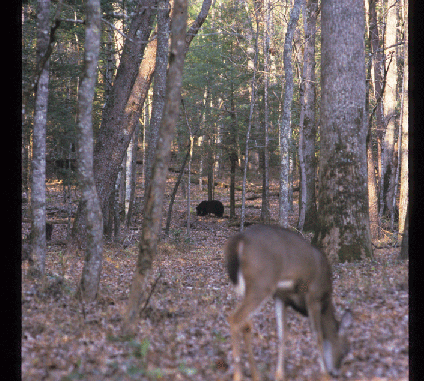
The topic of whitetail personalities is being addressed more and more in the hunting industry, and here again an individual deer’s disposition of being more inclined to the fight or flight instinct will undoubtedly have an effect on how the animal responds to predators.
The majority of females maintaining a social hierarchy evade predators. Although there are instances of both bucks and does confronting coyotes, most whitetail don’t hang around for a party.
When it comes to bears, however, the trend is quite different.
Deer tend to be more tolerable of black bears. Although bucks and does can quickly vanish at the site of a bruin, some whitetails just keep a distance and stay alert — particularly if an acorn crop is present.
A few bucks with an assertive disposition have cautiously consumed acorns within 60 to 100 feet of bears doing the same.
In these types of situations, deer learn that bruins don’t harass them like coyotes. Along with a drive for nutritional competitiveness and a whitetail’s individual disposition inclined toward dominance, the deer adapts and obtains nuåçtrition.
All these dispositional/personality responses to predators will contribute to a whitetail’s way of adapting to predators. Bucks that are more assertive and not intimidated tend to stick to their patterns of sign-posting activity for the most part — unless coyotes become highly concentrated.
In turn, these dispositional bucks may be easier to harvest simply because they are less inclined to flee.


